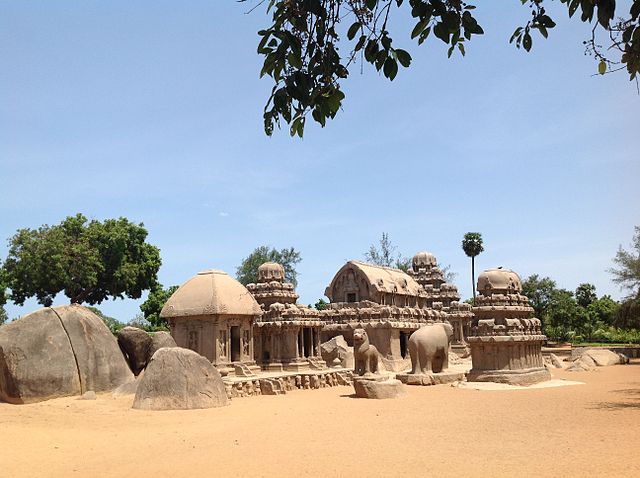Nakula Sahadeva Ratha is a monument in the Pancha Rathas complex at Mahabalipuram, on the Coromandel Coast of the Bay of Bengal, in the Kancheepuram district of the state of Tamil Nadu, India. It is an example of monolith Indian rock-cut architecture. Dating from the late 7th century, it is attributed to the reign of King Mahendravarman I and his son Narasimhavarman I of the Pallava Kingdom. The entire complex is under the auspices of the Archaeological Survey of India (ASI), and is one of the Group of Monuments at Mahabalipuram that were designated as a UNESCO World Heritage Site since 1984.
Nakula and Sahadeva Ratha
Sculpture of an Elephant situated next to the Nakula Sahadeva Ratha
Simha Vahana on the back side of the Nakula Sahadeva Ratha
Pancha Rathas is a monument complex at Mahabalipuram, on the Coromandel Coast of the Bay of Bengal, in the Chengalpattu district of the state of Tamil Nadu, India. Pancha Rathas is an example of monolithic Indian rock-cut architecture. The complex was initially thought to have carved during the reign of King Narasimhavarman I However, historians such as Nagaswamy attributed all of monuments in Mahabalipuram to Narasimhavarman II with the discovery of new inscriptions. The complex is under the auspices of the Archaeological Survey of India (ASI) and is part of the UNESCO World Heritage Site inscribed by UNESCO in 1984 as Group of Monuments at Mahabalipuram.
Five Rathas of Mamallapuram (Mahabalipuram), 630–668 AD
Dharmaraja Ratha
Bhima Ratha
Arjuna Ratha







